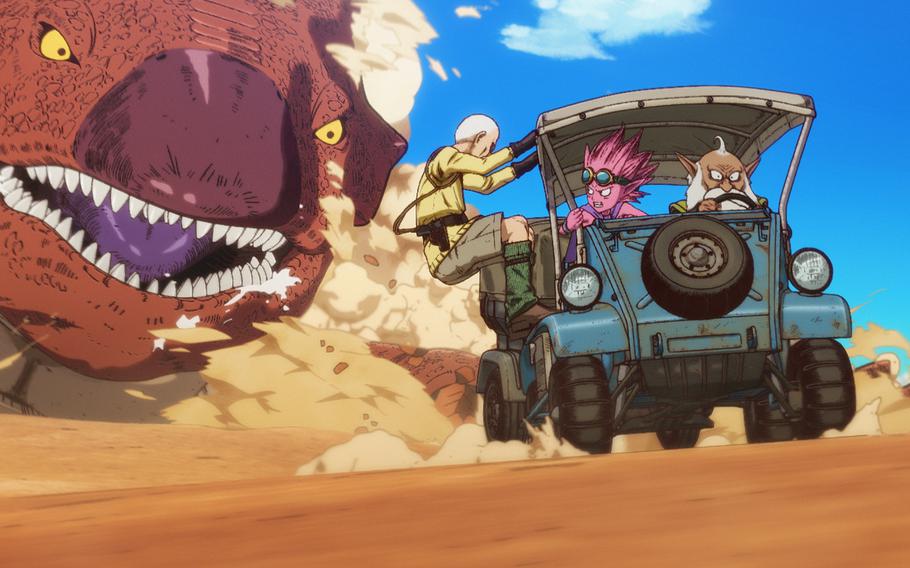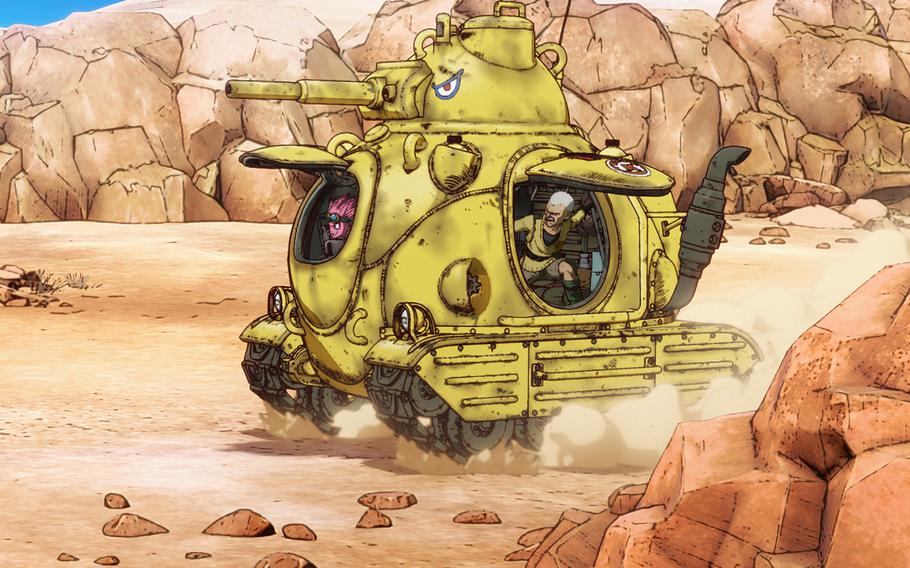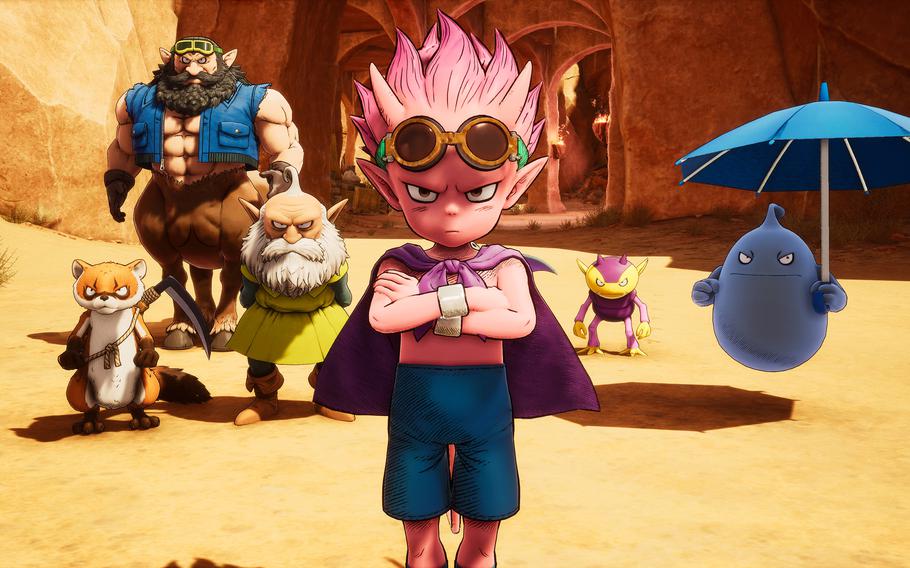
Sand Land follows the adventure of Beelzebub, the Fiend Prince, and others as they try to find a legendary spring. (Bandai Namco/TNS)
Although the late Akira Toriyama is widely known for his work on Dragon Ball and its sequels, the artist and storyteller wasn’t limited to a single medium or creation. He’s responsible for crafting the visuals of legendary games such as Chrono Trigger and the Dragon Quest franchises, and he also created other projects such as Dr. Slump and a post-Dragon Ball Z work called Sand Land.
That latter effort never caught fire like Goku and company did, but Sand Land showed off his fertile imagination. Now, Bandai Namco has brought that world to life through an open-world adventure game of the same name. As the name implies, it takes place in a desert world where water is scarce. A greedy king sells the resource for an exorbitant amount.
A quest for water
Tired of the exploitation, Sheriff Rao discovers a hint of a solution. He notices blue birds in trees and realizes they’re a sign that abundant water is somewhere in the world. He stops by the powerful Demon Village and asks for help, offering a video game console as payment. It’s enough to catch the Fiend Prince Beelzebub’s attention. He asks his father for permission to go on adventure with Rao. He and an older adviser named Thief join Rao on a quest to search for the legendary spring.
Sand Land carries Toriyama’s unmistakable art style. It’s seen in everything from the character design to the vehicles. Beelzebub, Rao, Thief and Ann could easily be part of the Dragon Ball universe, but the big difference between the two works is that Sand Land is more grounded. It’s focused more on exploration, and that’s done through the tanks, cars and robots that players build with the help of a mysterious character named Ann, who has an affinity as a mechanic.

Tanks are the most reliable vehicles in Sand Land, offering protection and transportation. (Bandai Namco/TNS)
Vehicles are key
As Beelzebub, players start with stealing a tank and later add to a fleet of crafts and bots. The developer, ILCA, designed the world so that crafts act as a way to gate parts of the world. Initially, the armored vehicle can only go so far. It can’t leap over cliffs like a Jump-Bot and it can’t lift containers like the Battle Armor can. As players attain blueprints for the seven different vehicles and bots, it opens up more of the world and its secrets.
In addition, the crafts play a major role in combat. Players will encounter enemies such as Queen Scorpions and mechs that will be tough to fight on foot. No matter how strong Beelzebub is, it’s often better to attack adversaries inside a vehicle. The big reason for that is the tank can take punishment and be upgraded to take advantage of a playstyle. If players need more agility, they can use the Uniride. If they need to attack from higher up, they can switch on the fly to the Jump-Bot.
Adventuring on foot
At times, Beelzebub won’t have the room to call on a vehicle. When that happens, he’ll have to rely on his fists and special abilities. As the Fiend Prince, he is tough enough to go toe to toe with bandits and other baddies. The combat isn’t complex and feels simple. Don’t expect a Platinum Games-level combat system. Beelzebub has a few special abilities that players can access with the bumper buttons. They can also call on allies to jump into the fray. All of this costs Power of Darkness, which acts as mana bar that refills over time, so that players can’t constantly use the prince’s most powerful attacks.
Beelzebub may be gifted in combat, but that isn’t always required in Sand Land. Players will come across levels where stealth is required, and ILCA furnishes a simple system for that, but like the combat, there’s not much depth to it aside from keeping out of an enemy’s line of sight.

Beelzebub is one of the most powerful demons in Demon Village in Sand Land. (Bandai Namco/TNS) (Bandai Namco/TNS)
Although Beelzebub seems limited at first, he gains more abilities as he acquires skill points. Players can use them on two skill trees, one for himself and another for allies so that players can choose how they level up the characters. The progression doesn’t give players any hard choices as they can eventually unlock all the abilities given enough time.
Like any open-world game, Sand Land has plenty of side quests, but ILCA designs them in a way that makes them more meaningful. The heart of this gameplay design is the town of Spino. It was previously allied with rebels but was nearly destroyed by the King and his Royal Army. When Beelzebub and his crew find it, Spino is nearly a ghost town.
As players venture through Sand Land and do side quests to help its inhabitants, Beelzebub recruits the denizens and sends them to Spino. Do enough side quests and players will notice the town change and grow. It’s a rewarding way to make these optional diversions more meaningful.
Players can see the people they help establish lives in the town. They also open up shops and other amenities, turning a scrapyard village into a bustling oasis. All of this helps Beelzebub and his crew tackle the challenges ahead. It’s one of the most rewarding parts of the campaign, with storytelling that’s geared toward children but has enough of an edge to keep older players glued to finding out what happens next.
Taken together, Sand Land is an adventure that’s better than its peers because of Toriyama’s imagination. ILCA gets the most out of the world he envisioned and interprets it in a way that’s fun as a video game. In the process, they create another way for fans to appreciate the legendary creator’s work.
Platforms: PlayStation 5, PlayStation 4, Xbox Series X and Series S, PC
Online: playsandland.com